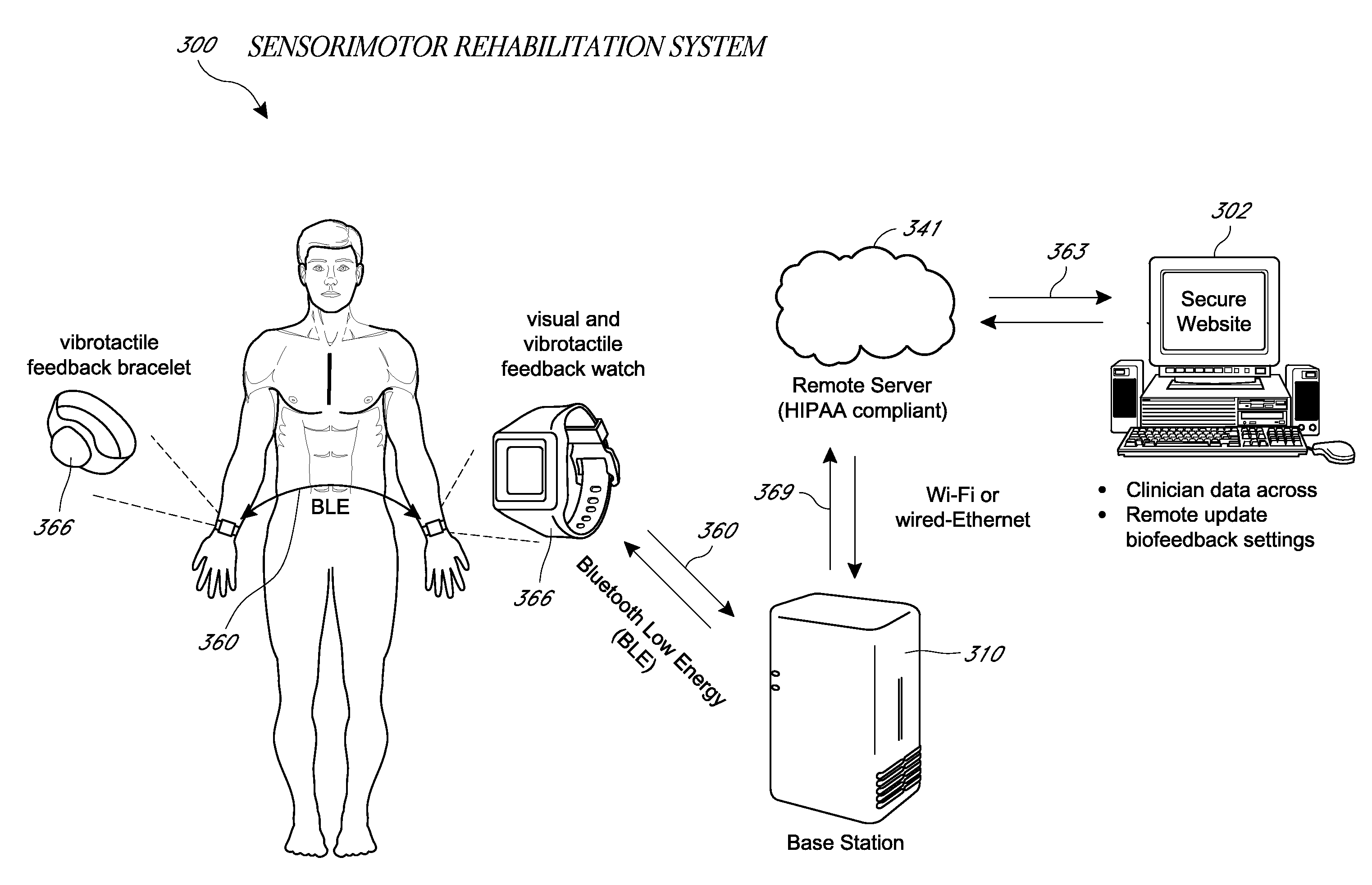Systems and methods for sensorimotor rehabilitation
a sensorimotor and rehabilitation technology, applied in the field of body movement kinematics analysis of a person, can solve the problems of limiting the use of the unaffected limb, affecting the use so as to facilitate rehabilitation training, prevent, inhibit and/or reverse the learning of non-use of the affected limb
- Summary
- Abstract
- Description
- Claims
- Application Information
AI Technical Summary
Benefits of technology
Problems solved by technology
Method used
Image
Examples
embodiment 1
[0099]2. The method of Embodiment 1, wherein the feedback is indicative of a corrective action for improving sensorimotor rehabilitation.
[0100]3. The method of Embodiment 1, wherein the inertial sensor is attached to a wrist of the affected upper limb of the person.
[0101]4. The method of Embodiment 1, wherein the inertial sensor is attached to a finger of the person, a hand of the person, a wrist of the person, a forearm of the person, or an upper arm of the person
[0102]5. The method of Embodiment 1, wherein the one or more signals are generated by at least two inertial sensors, wherein a first inertial sensor of the at least two inertial sensors is supported at a first position on the affected upper limb of the person, and a second inertial sensor of the at least two inertial sensors is supported at a second position on an unaffected upper limb of the person, and the affected limb exhibits more limited motor control than the unaffected limb due to nervous system damage of the perso...
embodiment 5
[0103]6. The method of Embodiment 5, wherein the characteristic is associated with the quantity of upper limb movement of the person, and wherein the characteristic comprises a ratio of affected upper limb movement to unaffected upper limb movement.
embodiment 6
[0104]7. The method of Embodiment 6, wherein the ratio of affected upper limb movement to unaffected upper limb movement is associated with a quantity of one or more types or groups of upper limb movements.
[0105]8. The method of Embodiment 6, wherein a packaging containing at least one of the at least two inertial sensors comprises a graphical display configured to display the ratio of affected upper limb movement to unaffected upper limb movement.
[0106]9. The method of Embodiment 6, further comprising displaying a reward message in association with the first sensor when the ratio of affected upper limb movement to unaffected upper limb movement is above a predetermined ratio.
[0107]10. The method of Embodiment 6, further comprising vibrating a packaging that supports the second sensor to generate a vibrotactile message when the ratio of affected upper limb movement to unaffected upper limb movement is below a predetermined ratio to discourage use of the unaffected upper limb.
[0108]1...
PUM
 Login to View More
Login to View More Abstract
Description
Claims
Application Information
 Login to View More
Login to View More - R&D
- Intellectual Property
- Life Sciences
- Materials
- Tech Scout
- Unparalleled Data Quality
- Higher Quality Content
- 60% Fewer Hallucinations
Browse by: Latest US Patents, China's latest patents, Technical Efficacy Thesaurus, Application Domain, Technology Topic, Popular Technical Reports.
© 2025 PatSnap. All rights reserved.Legal|Privacy policy|Modern Slavery Act Transparency Statement|Sitemap|About US| Contact US: help@patsnap.com



